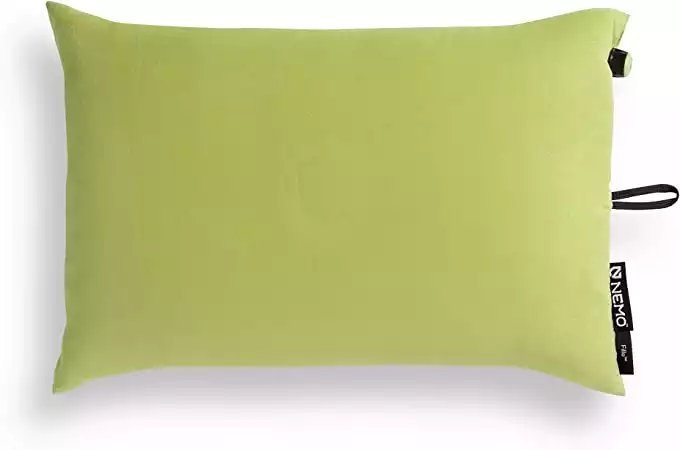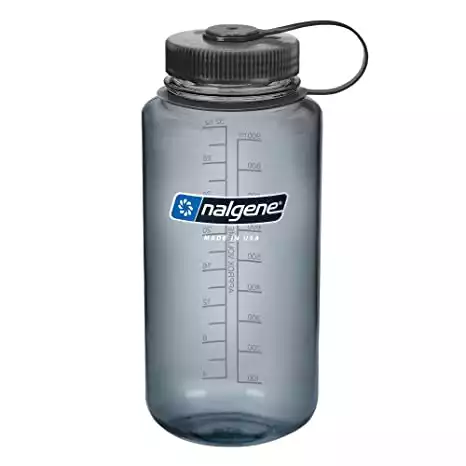Let’s face it: Getting a good night’s sleep while camping isn’t as easy as it might seem.
Between cramped tents, howling wind, and mysterious animal noises, sleeping on the ground while on a camping trip can be a challenge. The good news, however, is that it doesn’t have to be this way.
If you’re wondering what’s the most comfortable way to sleep in a tent, worry not. We’re here to help.
In this article, we’ll offer up 11 of our top tips to help you figure out how to sleep comfortably in a tent at night on all your upcoming adventures.
How To Sleep Comfortably In A Tent: 11 Top Tips
Not sure how to get comfortable when sleeping in your tent while camping? Here are 11 top tips to try out:
1. Search For A Flat Tent Spot
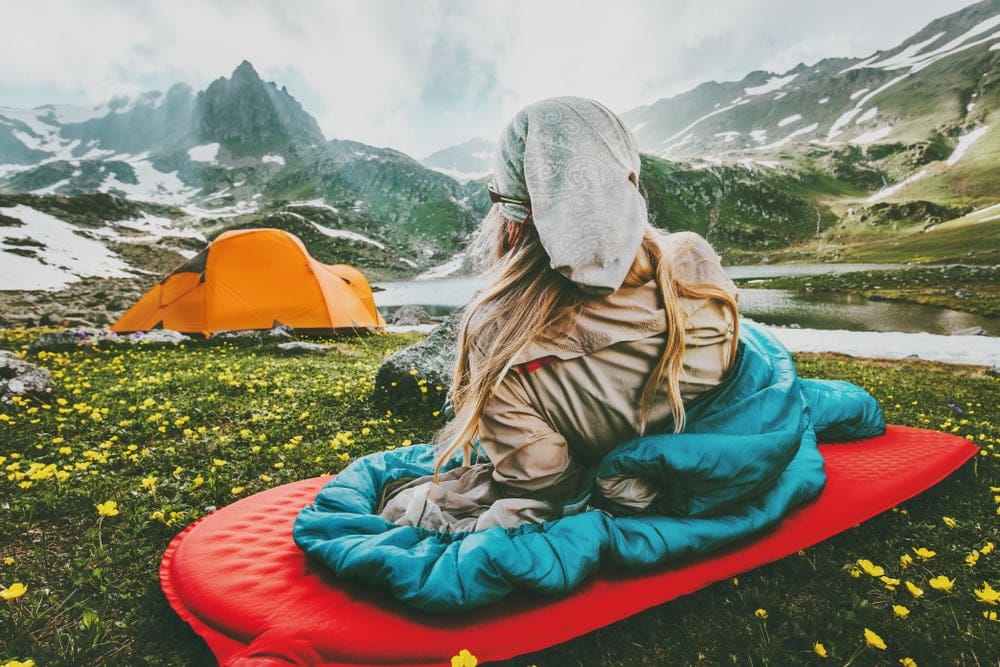
First things first, if you want to sleep comfortably while camping, it’s critical that you find a flat tent spot for the night. Otherwise, you’ll quickly find yourself slipping and sliding off your sleeping pad as you try to catch some Zzzs in your tent.
Although a perfectly flat sleeping spot might not be possible depending on your particular camping location, choosing the flattest spot you can find is your next best bet. When you arrive at camp, take your time and scope out the area before you decide on a tent site.
In fact, if you’re camping in a particularly hilly area or you’re debating between 2 potential sites, consider actually lying down on the ground as if you were asleep to test out the slant of the slope. Doing so will give you a good idea of whether or not you’ll actually be able to sleep comfortably at night.
2. Opt For A Spacious Tent
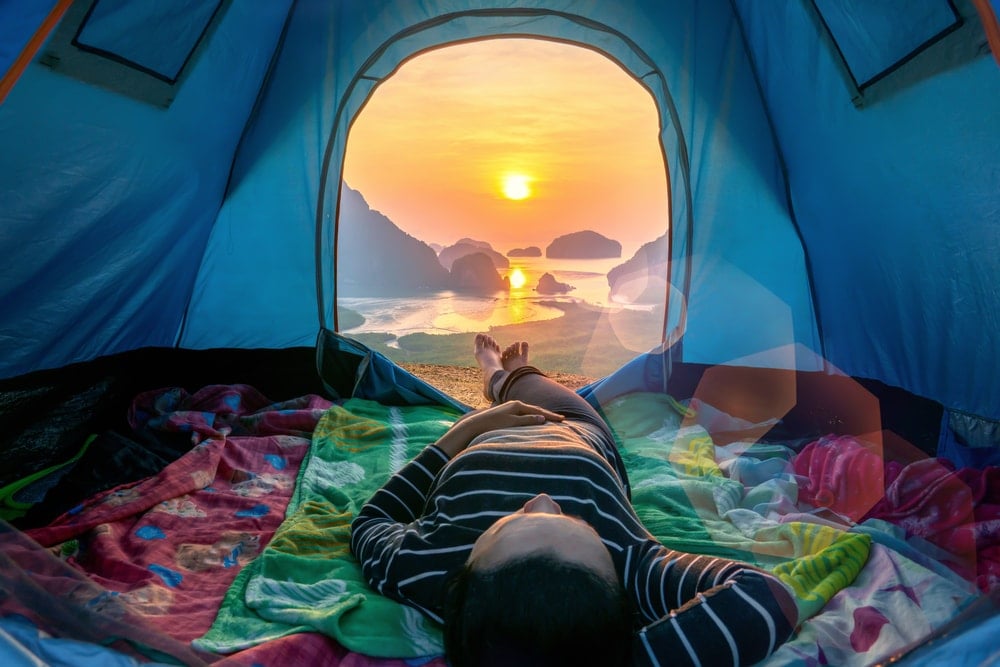
Most of us humans are used to sleeping on a bed, which usually provides more than enough sleeping space for us to stretch out and relax. However, many tents – especially those used for backpacking – are anything but spacious.
While this fairly cramped design found in many backpacking tents is essential for cutting weight on more remote adventures, it doesn’t exactly bode well when it comes to your comfort at night. Therefore, if you struggle to get a good night’s sleep on your camping trips, it might be worth investing in a more spacious tent.
Depending on your personal camping style, this might mean opting for a multi-room family tent on a car camping trip or a backpacking tent that offers more square footage in the sleeping area.
As a general rule, adult humans need about 20 to 25 square feet (1.9 to 2.3 m2) of sleeping space each to be comfortable in a tent at night with all their gear. So, always consider the total floor space of a tent before you invest and consider “sizing up” your shelter so that it has more space than you actually need for added comfort at night.
3. Check The Temperature Rating Of Your Sleeping Bag
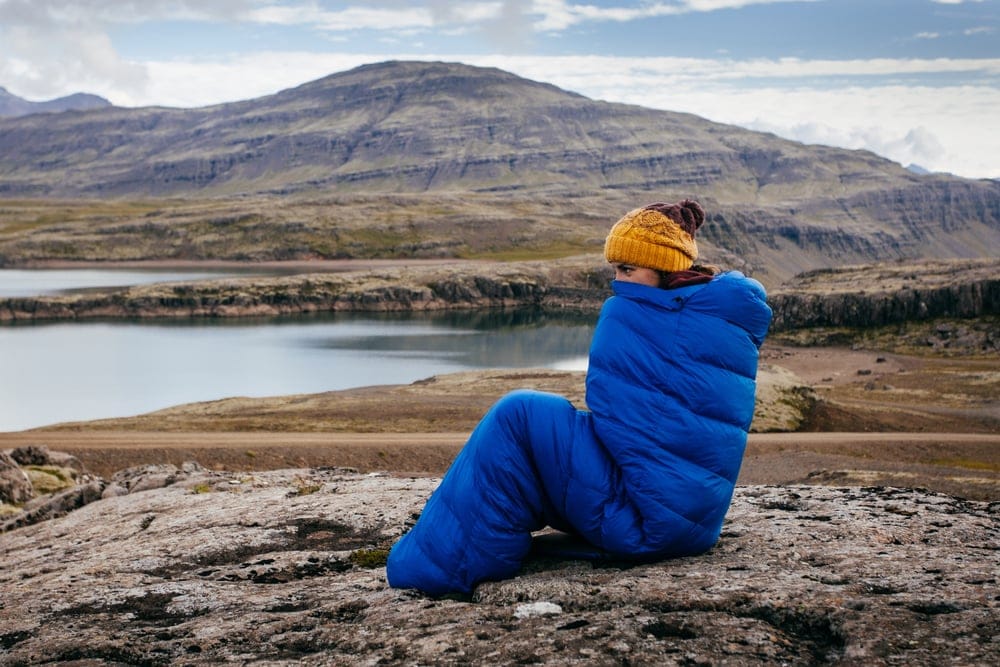
A sleeping bag is an essential part of any camping gear list, but not all sleeping bags are created equal. In particular, if you want to stay warm at night, conserve your precious body heat, and get enough sleep, having a sleeping bag that’s appropriately rated for the conditions you’ll face is essential.
This means opting for a sleeping bag with a temperature rating that’s about 10ºF to 15ºF (5ºC to 8ºC) warmer than the coldest temperatures you expect to face in the mountains. However, if you find that you generally get quite cold at night, or if you’re going winter camping, you might consider a model that’s about 20ºF (11ºC) warmer than the temperatures you expect.
That being said, if buying a whole quiver of sleeping bags for different temperatures that you might face outside isn’t in your budget, then there is another solution: a sleeping bag liner plus you can also check other sleeping bag alternatives such as a blanket, a quilt to keep you warm in winter days.
Sleeping bag liners, like the Sea to Summit Thermolite Reactor Extreme, can add up to 25ºF (14ºC) of warmth to your bag, helping you conserve your precious body heat as you sleep in cold locales.
- Adds up to 25 °F (14 °C) of warmth to a sleeping bag
- Lightweight, more packable than fleece
- Measures 82 in (208 cm) x 35 in (89 cm)
4. Invest In An Inflatable Sleeping Pad
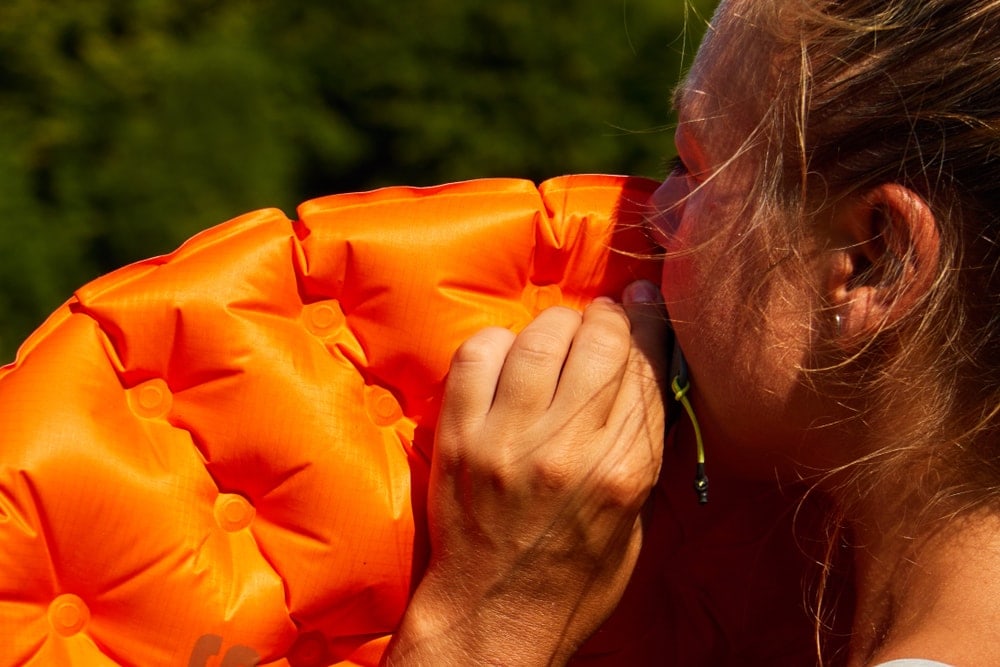
There are many different sleeping pads on the market today, but many are actually crafted more for utilitarian insulation purposes than they are for comfort. Therefore, if you’re struggling to get a good night’s sleep while at camp, you may want to consider an inflatable sleeping pad.
Inflatable sleeping pads, like the ultralight Therm-a-Rest NeoAir can increase your comfort levels drastically while you’re outside. That’s because they’re much better at conforming to the shape of your body than your standard foam sleeping pad. Moreover, inflatable models provide much more padding between you and the hard ground at night.
Of course, many inflatable sleeping pads can be quite pricey, especially when compared to their foam counterparts.
So, if you’re going car camping, you could consider using an air mattress instead, as they tend to be more affordable. Alternatively, if budget is a concern, you could also try 2 foam sleeping pads while backpacking instead of a single inflatable model for a bit of extra padding at night.
- Delivers warmth and comfort even in extreme conditions
- Inflates 3x faster than standard ones
- Available in various sizes (S,M,L)
5. Don’t Forget The Camp Pillow!
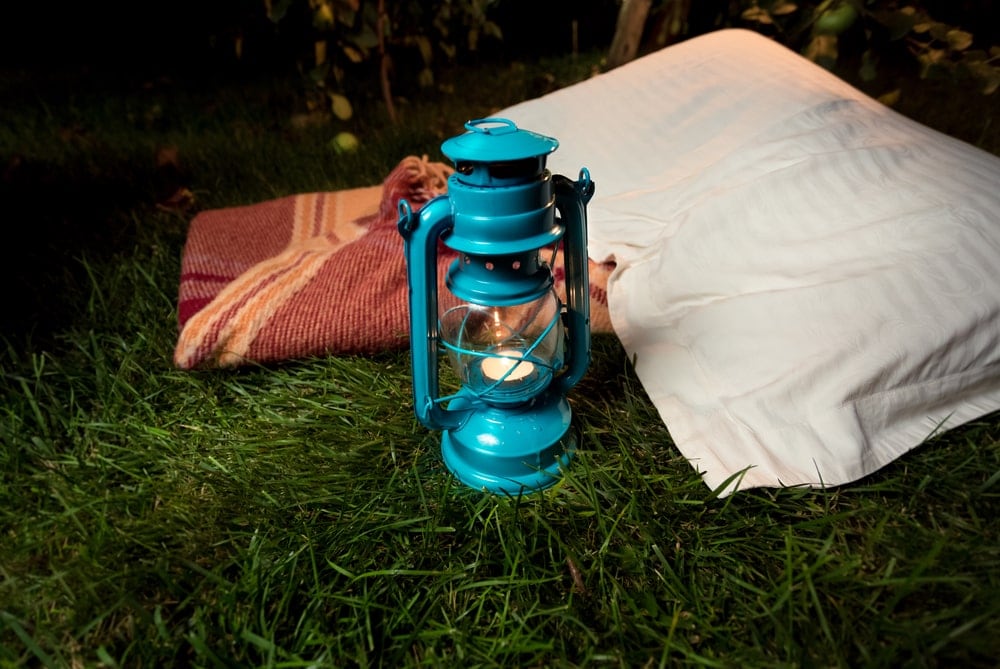
The vast majority of us sleep on pillows at home, but later neglect to bring one while we’re outside. So, it’s no wonder that many campers find that they struggle to sleep as well in a tent as they do in their bed at home.
Thankfully, the answer is simple: a dedicated camp pillow.
While you could, of course, try to manufacture a makeshift camp pillow from a stuff sack and some spare clothes, doing so will never be as comfortable as getting an actual pillow where you can lay your head at night.
Indeed, while a compressible pillow or an inflatable pillow like the Nemo Fillo Pillow may seem like an unnecessary luxury while backpacking, it’s a solid choice if comfort is a top concern.
That being said, if you’re car camping, you can always keep things simple and just bring a pillow from home. The key here is to have a pillow that can properly support your head at night so you can get your much-needed beauty sleep.
- Upgraded pillow to bring more comfort to campers
- Washable microsuede/jersey cover
- Measures 17 in x 11 in x 4 in (43 cm x 27 cm x 10 cm)
6. Ear Plugs & Eye Masks Are Essential
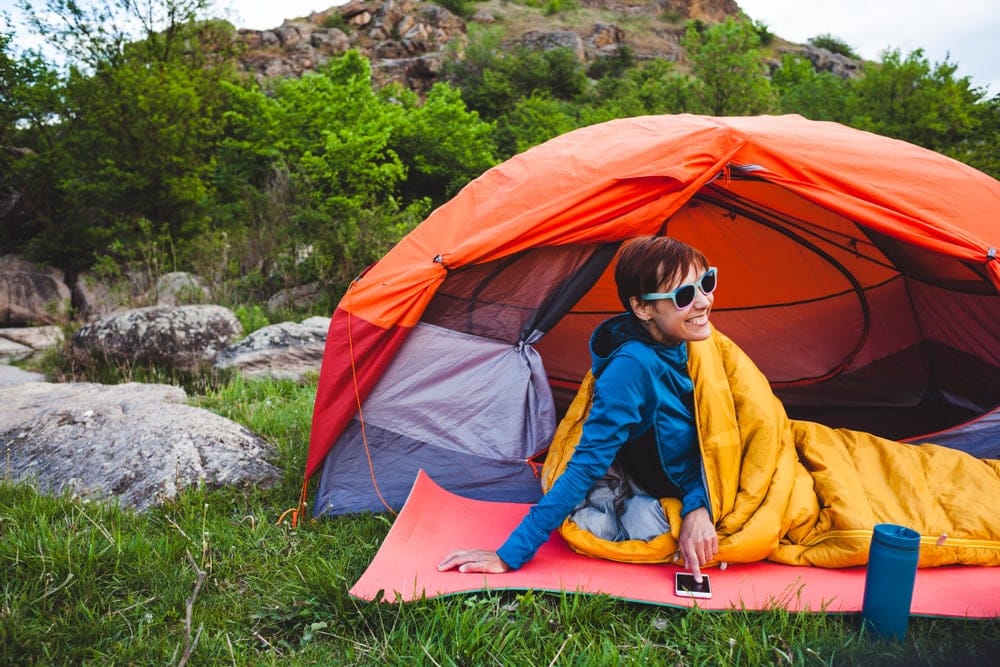
Unless you know that you can sleep through pretty much anything, ear plugs are an essential part of any camping packing list.
Why?
Well, when you factor in buzzing mosquitoes, chirping birds and insects, snoring tent mates, and the howling wind, the outdoors can be a pretty noisy place. Therefore, a pair of ear plugs can make a big difference if noise tends to keep you awake at night.
Taking things a step further, if you’re camping in particularly sunny environments or at the high latitudes where sunshine pervades into the wee hours of the morning, an eye mask is a sure bet.
This is particularly true if you have a lightly colored tent fly (e.g., yellow, white, or light grey), as these fabrics tend to create a very bright sleeping area when the sun is shining – not an ideal situation if you like to sleep in well after sunrise on your camping trips.
7. Make A Hot Water Bottle
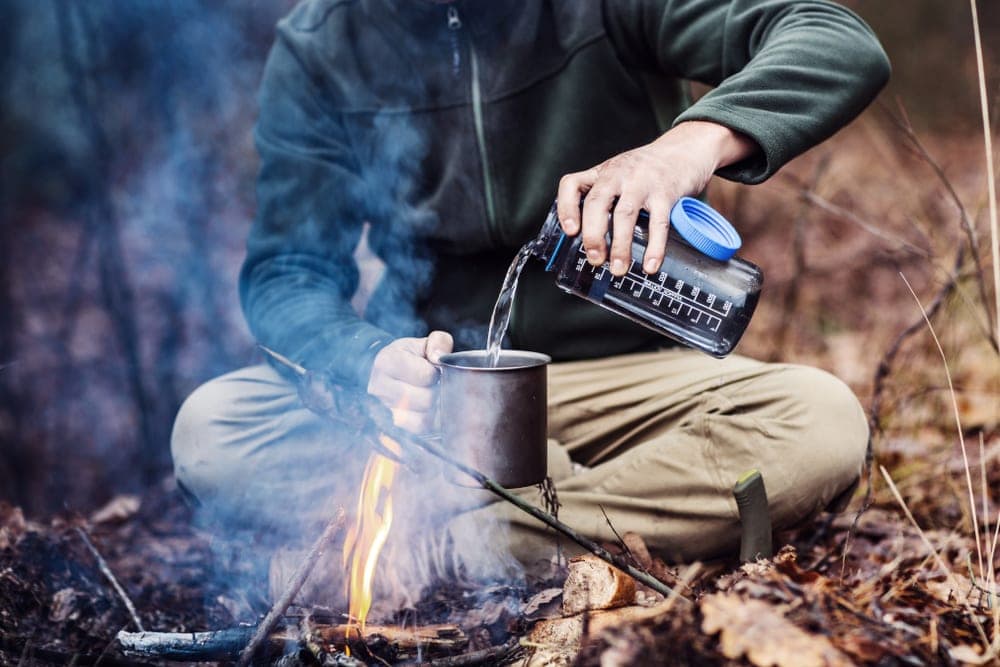
For many of us, being cold at night while camping is just another fact of life. Indeed, many campers find that they can’t sleep well in the outdoors simply because they’re too cold, even if they’re bundled up in warm clothes inside a puffy sleeping bag.
On particularly chilly nights, a simple, yet highly effective way at adding a whole lot of warmth to your sleeping bag at night is to make yourself a hot water bottle.
If you’re car camping, you could bring along a traditional hot water bottle and simply fill it up with near-boiling water from your stove. Conversely, for backpackers, an even simpler option is to use a hard-sided plastic water bottle, like a Nalgene, and fill that up with warm water, instead.
Then, you can take your hot water bottle into bed at night and snuggle with it for extra warmth as you snooze.
- Leak-free and virtually indestructible water bottle
- Holds up to 32 ounces (1000 ml) and measures 8.25 in (21 cm)
- Free of BPA, BPS, and phthalate
8. Use The Loo Before Going To Bed
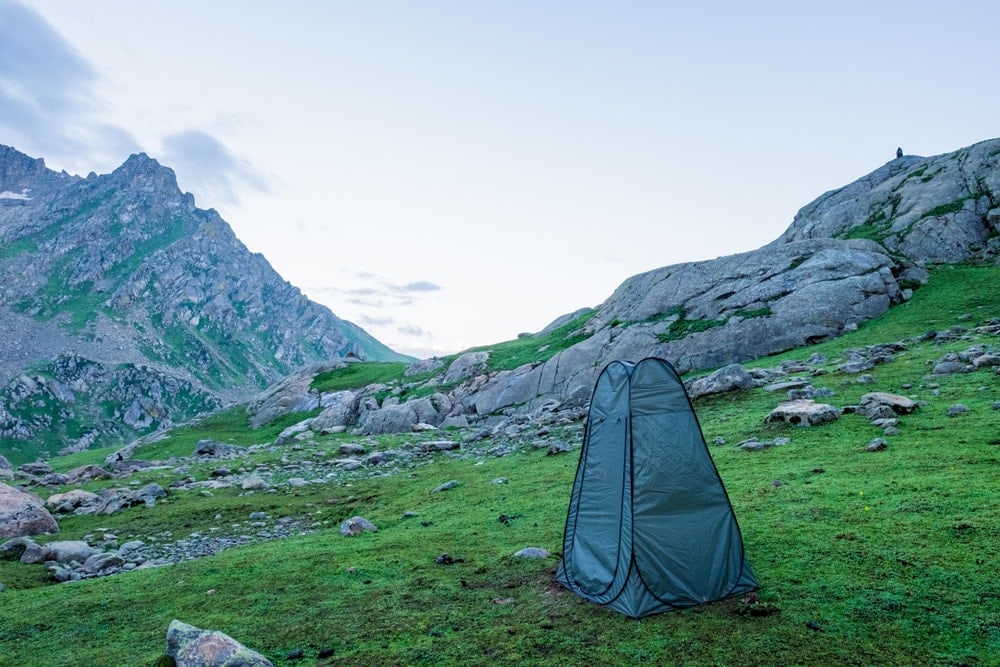
There are few things worse on a camping trip than having to get out of bed multiple times in the night to answer nature’s call.
Unzipping your warm sleeping bag and fumbling to put your shoes on so you can sneak outside and expose yourself to the chilly nighttime conditions for a few minutes isn’t exactly anyone’s idea of a good time – nor is it likely to help you in your quest to sleep well while in camp.
The answer? It’s simple. Go to the toilet a couple times before heading into your tent for the night.
Sure, this is no guarantee that you won’t have to get out of bed, but doing so will surely help reduce the likelihood of annoying nighttime excursions.
Oh, and try to cut down on the amount of fluids you drink later at night. While hydration is certainly important during a camping trip, consider maximizing your fluid intake around dinnertime and reducing your consumption as bedtime approaches so you can spend more time in your sleeping bag at night and less time at the loo.
9. Flatten Out Your Sleeping Area Using Extra Gear
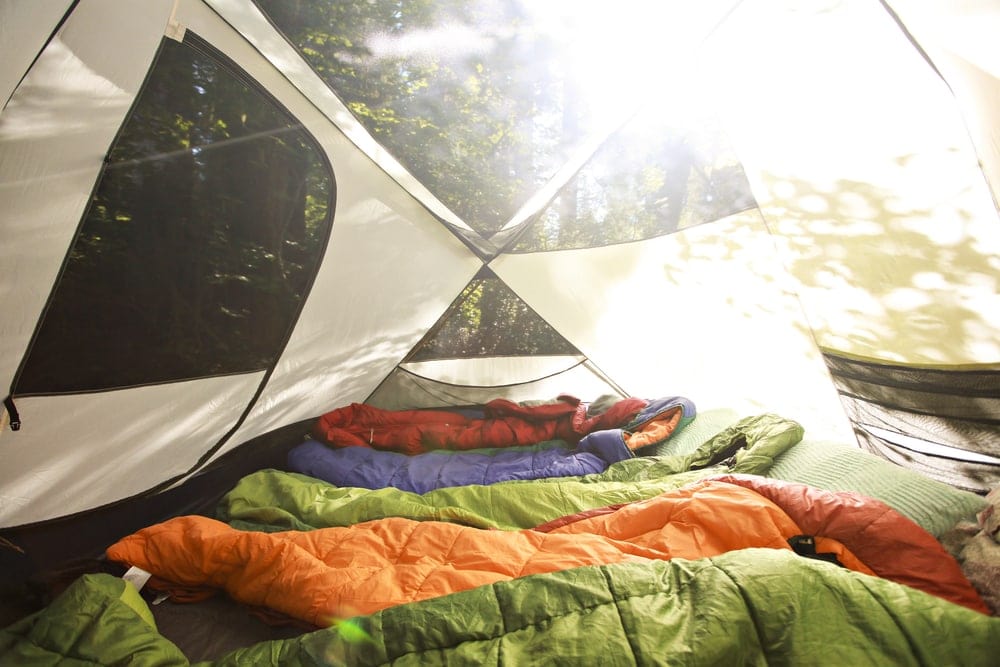
We’ve already talked a bit about the importance of finding a flat camping area at night. But, what if you can’t quite find that perfectly flat tent spot? Or what happens if your tentsite options are limited and there happens to be a big slope in your camping area?
Simple: Use your backpack and other spare gear to create a makeshift flat-ish sleeping area for the night.
Now, this might sound complicated, but it’s fairly straightforward when you get the hang of it.
Once you get inside your tent for the night, lie down on your sleeping pad for a bit and see if you start to slide in a given direction. If so, use your backpack or some spare clothing to prop up that side of your sleeping pad so you’re less likely to slide in the middle of the night.
Usually this means that you’ll put a backpack or spare gear under the foot of your sleeping pad to stop you from sliding downhill, though in more undulating terrain you may have to prop up multiple sides of your sleeping pad.
This tactic is particularly helpful in more remote locales in the mountains where finding a perfectly flat campsite is next to impossible. However, you can use it any less-than-ideal tentsite to maximize your comfort levels at night.
10. Try Not To Overdress
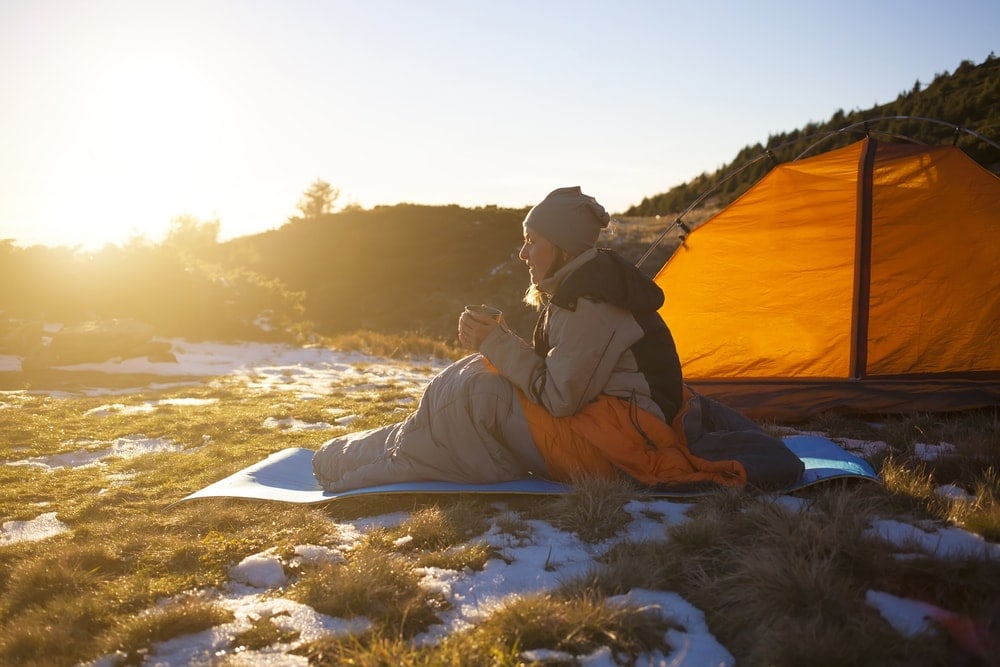
This tip might seem a bit counterintuitive to folks who tend to feel quite cold at night while camping, but it’s actually best not to overdress when you sleep outside.
That’s because overdressing by putting on too many layers of clothing prevents your sleeping bag from being able to do its job. Since sleeping bags are designed to insulate you from the cold by trapping in your body heat, putting too many layers between your and your bag can minimize its effectiveness.
However, it’s important to point out that there’s a bit of a debate in outdoor circles about whether you should wear just your base layers at night or your base layers plus a few insulating jackets for extra warmth.
At the end of the day, it doesn’t really matter which option you choose so long as you feel warm enough at night. For most people, this means wearing 1 or 2 insulating jackets on top of your base layers, but don’t put on so much clothing that you struggle to get into and zip up your sleeping bag.
11. Tire Yourself Out During The Day
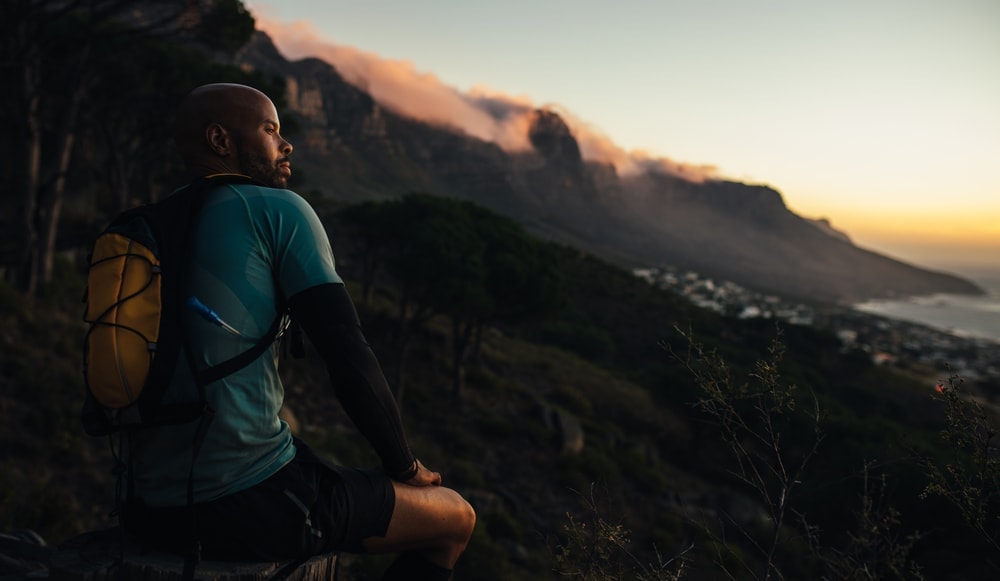
Finally, the key to getting a good night’s sleep is to feel tired when you head to bed. There’s no magic cure that can help you fall asleep if you’re full of energy, so planning enough activity for the day to tire yourself out is essential.
If you’re tired enough on your camping trip, your body will eventually just fall asleep, so knocking out more mileage each day on the trail might just be what you need to get the sleep you crave while outside.

Share this Image On Your Site
<a href="https://outforia.com/the-most-comfortable-way-to-sleep-in-a-tent/"><img style="width:100%;" src="https://outforia.com/wp-content/uploads/2021/01/Graphic-Image_-Comfortable-way-to-sleep-00-683x1024.png"></a><br> Most Comfortable Way to Sleep in A Tent Infographic by <a href="https://outforia.com">Outforia</a>FAQs
What Is The Best Thing To Sleep On When Camping?
The best thing to sleep on while camping is a sleeping pad. Generally speaking, inflatable sleeping pads are more comfortable than closed-cell foam options, but they do come with a higher price tag.
Alternatively, if you’re car camping, you could consider a purpose-built camping air mattress. For added comfort, try placing a mattress topper on top of the air mattress for enhanced padding and insulation at night.
Does A Sleeping Pad Go Inside A Sleeping Bag?
For the most part, no, sleeping pads do not go inside sleeping bags. Most sleeping bags are designed to be placed on top of sleeping pads rather than to have a sleeping pad placed inside of them.
That being said, there are a small number of sleeping bags on the market that are engineered so that you can insert a sleeping pad inside of them. However, this is the exception rather than the rule.






